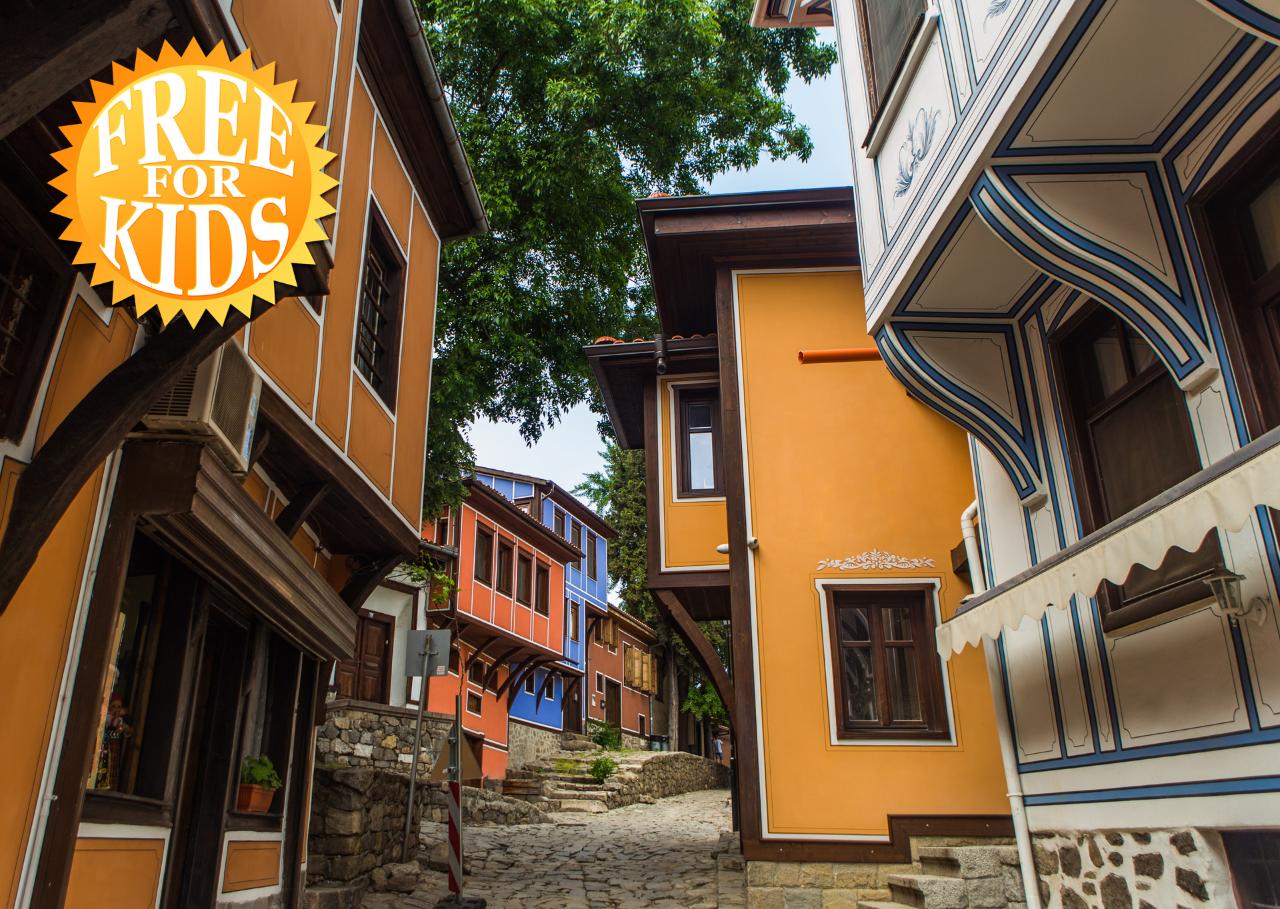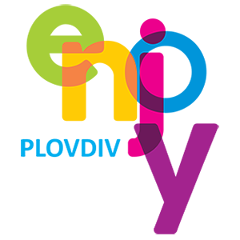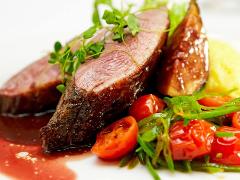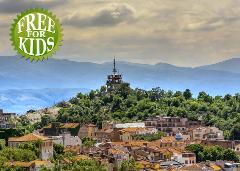Cultural Tour of Plovdiv's Old Town

- Duration: 4 Hours (approx.)
- Location: Plovdiv
- Product code: OLDTWN
About
A full, day-long tour of the centerpiece of the city of Plovdiv – the Old Town architectural and historical reserve. The buildings belonging to the Bulgarian Revival Period Architectural Style, the landmarks, and the pieces of ancient Roman architecture scattered around the Old Town form a rich tapestry of several historical periods, forming a mural that offers a valuable insight into multiple cultures and their lifestyle, preserving them for future generations to see.
Highlights
- See the most famous landmark in Plovdiv – its Ancient Roman Theatre
- Tour the historic house-museums Balabanov House, Hindliyan House and Klianti House
- Visit the oldest church in Plovdiv – the St. Constantine and Helen Church
- Get authentic souvenirs from the market stalls of the Street of Folk Arts and Handcrafts
- Immerse yourself into the local culture at the Ethnographic Museum
- Enjoy a panoramic view of the city from atop Nebet Tepe
Description
The Old Town of Plovdiv is an architectural museum, offering a glimpse of what this city was like in past centuries. Many of the houses there once belonged to Plovdiv’s elite, and today they have been converted to historic house-museums that preserve the memory of its past, celebrate its achievements and showcase its beauty in a way that lets you experience it up close.
The Center of Plovdiv, like a miniature reflection of the city as a whole, is a place where old meets new. The Baroque-inspired Main Street runs adjacent to the Old Town, with several offshoots of the smaller streets weaving into the older cobbled roads of the historical and architectural reserve. A good meeting point for the tour would be the Roman Stadium which marks the end of the first 1/3 of the Main street. Eastward from there is the most popular entry point of the Old Town.
Passing Dzhumaya Mosque and heading uphill leads us directly to the Church of the Holy Mother of God. Built in 1844, this imposing structure is an example of Bulgarian National Revival art and architecture.
The road in front of the church if forked, and our route takes us right. Just past the church is the so called Yellow school – Bulgaria’s very first high school, founded in the distant 1868 and still in use to this very day.
Up ahead is the crown jewel of this city – the Roman Theatre, also known as the Ancient Theatre of Philippopol – one of the best preserved in the world. From this vantage point you’ll get to see the entire southern side of the city. It was constructed in the 1st century AD and used for theatre performances, gladiator games and hunting spectacles. It is still in use today as a stage for opera, music concerts, and other cultural events. Be sure to check if there are any events planned during your visit to Plovdiv! Witnessing one of the amazing spectacles that are hosted in the Theatre right from its ancient seats is a truly unforgettable experience.
We go back to the main road and continue to the St. Dimitar Solunski church – the highest situated church in Plovdiv. It is noteworthy for its marble iconostasis, the only one of its kind among Plovdiv’s Revival Period art. The icons inside the church date back to the 15th-18th century, and some of them are framed with silver.
We continue down the nearly even road, past the fascinating Revival period houses. Every other house is a historic house-museum, marked by the informative signs detailing its past owners and history.
Among them is the Klianti house-museum – the oldest out of the Old Town’s preserved richly decorated houses – nearly 200 years old. It is notable for its colorful ceiling murals – each room has its own unique ceiling, adorned with intricate floral motifs and landscapes. Having fallen into a state of disrepair, it underwent extensive restorations over the course of nearly a decade and was finally open to the public in mid-2017 to take its place as both a work of art and one of the most significant architectural landmarks in Plovdiv.
Our tour next takes us past Lamartine’s house, named after Alphonse de Lamartine. One of its rooms houses a permanent exhibition dedicated to the poet.
After that we’ll be heading down to the innermost sights of the Old Town. We’ll be passing the Paldin restaurant – a landmark unto itself and one of the most prestigious restaurants in the city. We can stop here for lunch, or simply for a nice coffee and dessert.
We end up just in front of the "Hippocrates" Pharmacy Museum – the only pharmaceutical museum exhibition in the country. It offers a look into the world of medicine starting from the Revival Period, all the way up to the beginning of the 20th century – a time during which medication was made entirely out of natural ingredients.
Adjacent is the “Zlatyu Boaydzhiev” house-museum – a gallery named after and dedicated to one of the most important Bulgarian painters – Zlatyu Boyadzhiev. The artist behind detailed paintings of the Old Town of Plovdiv and rural life, he suffered a stroke at age 48 and the formerly right-handed artist spent the rest of his career painting with his left hand and in a completely different style. The museum now houses 72 of his paintings.
The St. Constantine and Helena church was first built in the year 337 on the site of an older, pagan temple and has been destroyed and rebuilt several times over the course of its history. The church as it stands today was constructed in 1832, making even its current iteration one of the oldest churches in Plovdiv.
Near it is one of the best preserved structural fragments of the Ancient City of Philipoppol’s fortification system – the foundations of a circular tower known as the South Round Tower.
The street in front of the church is home to several antique shops. We can stop to browse and take a closer look at the tiny pieces of the past on display.
We reach a spacious square. This is where the road diverges into several directions, each leading to some of the most significant landmarks in the Old Town.
First, we’ll be heading right, towards Hisar Kapia. This medieval gate, built in the 11th century AD, stands on the foundations of an even older, Roman-period gate, and was once the Eastern entrance to the acropolis of ancient Plovdiv.
Our attention is immediately grabbed by one of the most stunning pieces of Revival Period architecture in the Old Town – the house of Dimitar Georgiadi, which houses the Plovdiv Regional History Museum’s Revival Period Exposition.
Immediately adjacent to it is the house of Nicholas Nedkovitch. Richly decorated on the outside, and even more so on the inside, the house is now a museum and houses the exhibition “Old-Time Urban Type” which shows what the wealthiest Plovdiv homes of the 19th century looked like. St. Nedelya church is just up ahead.
From there we’ll go down Stramna street, also known as the Street of Folk Arts and Handcrafts. Its small shops and market stalls showcase a wide selection of handcrafts, folk art and souvenirs that allow you to get in close contact with the local traditions. There is also an artisan bakery house, where you can choose among a huge variety of homemade bread and pastries. From there we circle back to Hisar Kapia and, beyond it, the Ethnographic museum.
The Plovdiv Regional Ethnographic Museum houses a collection of 40 000 cultural artifacts, including furniture, musical instruments, clothing, pottery, tools and household objects, offering a unique look into the lifestyle of the people who inhabited this region in the past. The museum itself is an intricately decorated Bulgarian Revival Period house heavily featuring Baroque elements.
After a tour of the museum, we ascend to the clearing at the peak of Nebet Tepe (or Nebet hill), from which you’ll be able to enjoy a panoramic view of the northern side of Plovdiv. The three remaining syenite hills tower over the cityscape in the distance. Strewn around the clearing is what remains of an ancient Thracian fortress, dating back to 4000 BC. We’ll stop here for pictures, to explore the ruins, and simply to enjoy the view.
Once we’ve had our fill, we continue our tour to the base of the Old Town, on its west side. We can take a detour to the house of Atanas Krastev, who was pivotal to the establishment and development of the Old Plovdiv institution, and its “Red Pony” gallery – the only open-air gallery in Plovdiv.
Back on our route, we’ll be passing by the Retro Photo Studio, where you can have your picture taken wearing an authentic Bulgarian folk costume, or try on a number of different costumes from different historical periods if you like.
We reach the most famous houses in the Old Town. Balabanov House is known for its impressive architecture, furniture, wall paintings, intricate woodcarvings on the ceilings – a unique design in each room – and artworks. The ground floor acts as an art gallery displaying a permanent exhibition of modern Bulgarian art. The Hindliyan House is a stunning example of Symmetrical Plovidv Architecture. With its Neo-Baroque design, intricate ceilings and the detailed landscapes handpainted on its walls, the Hindliyan house is the most richly ornamented of all preserved houses in the Old Town.
This concludes our tour. We can walk you to the Main Street if you wish.
The price includes
- Tour guide
The price does not include
- Entrance fees
Notes
The tour takes you to all the major landmarks in the Old Town. Which museums you want to enter is up to you – you will be advised which ones are a definite must-see.
The Old Town is built on steep terrain – atop 3 of Plovdiv’s syenite hills. The large cobblestones that pave its streets pose an additional challenge. While not difficult to navigate, visitors are advised to wear comfortable shoes so as to enjoy their tour with minimum discomfort.






